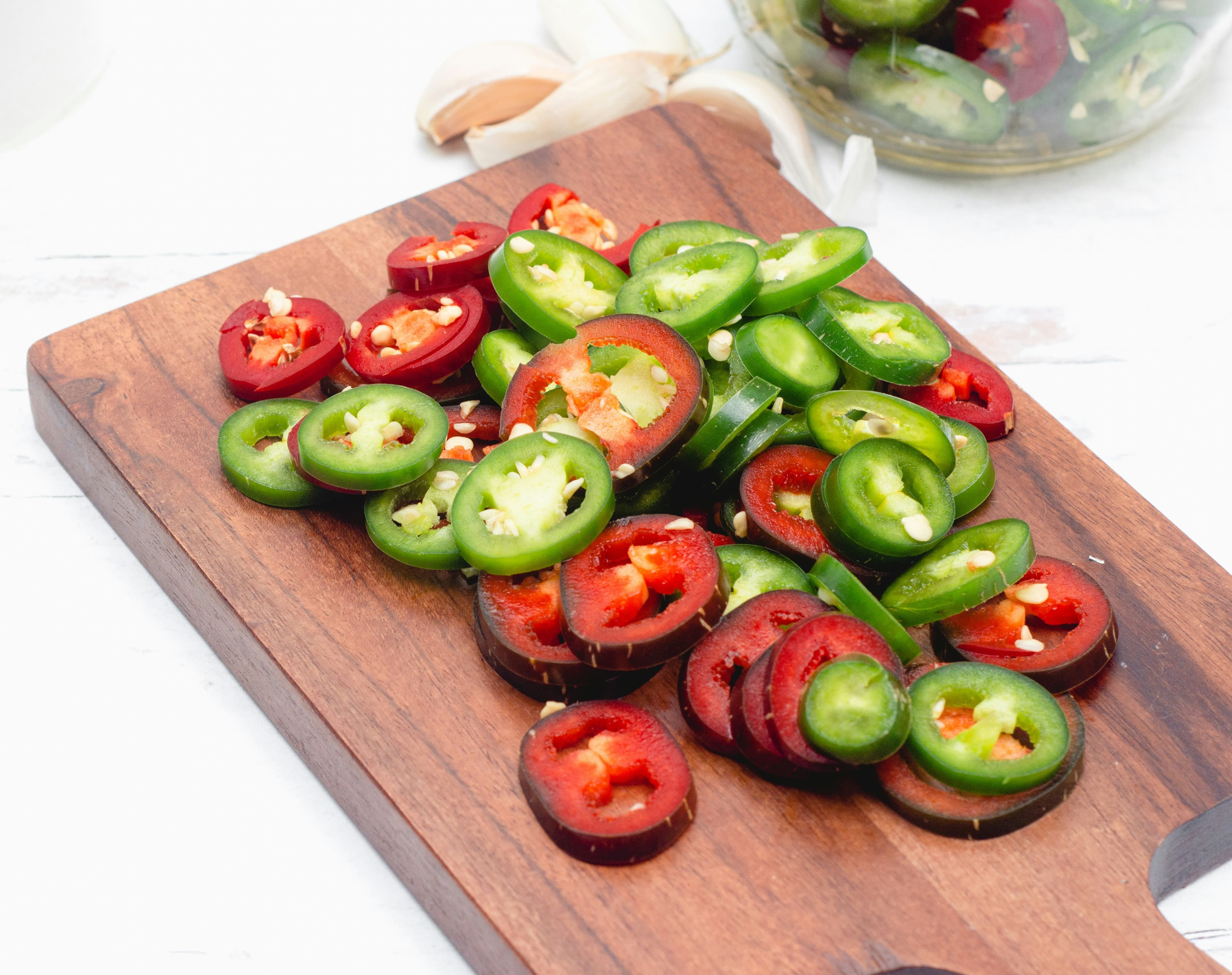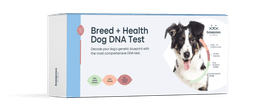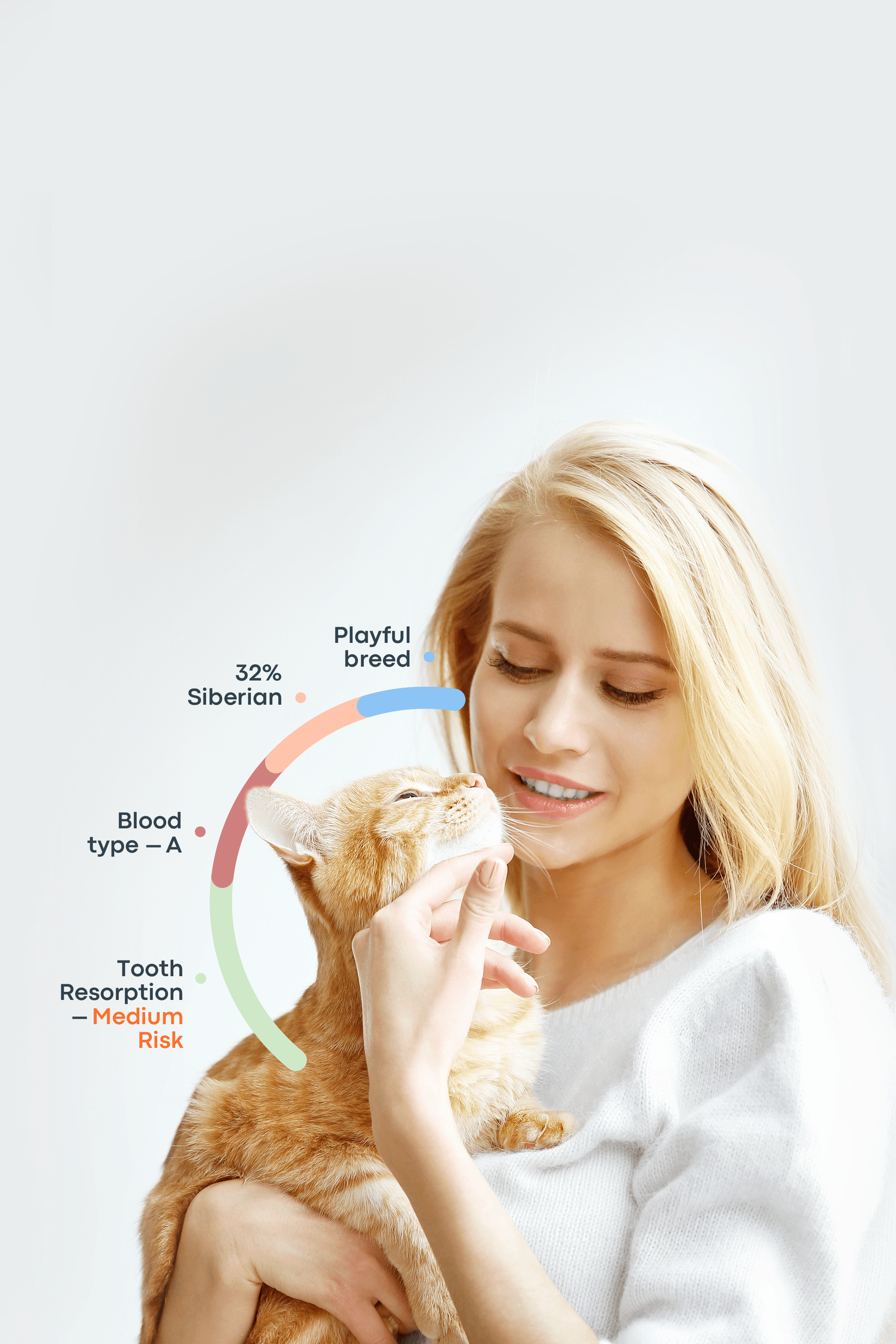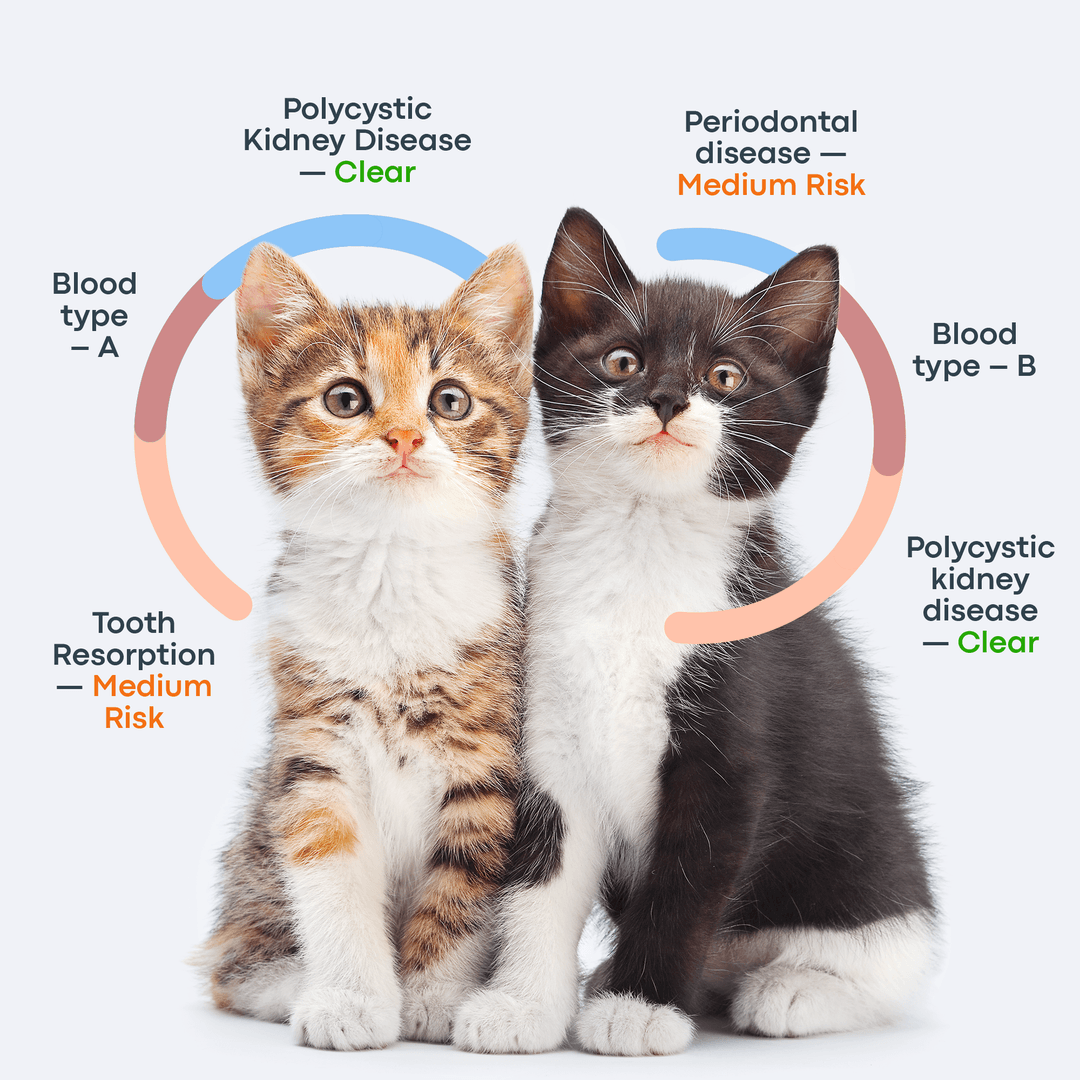Many pet parents wonder if sharing jalapeños as a snack is safe for their furry friends. Can dogs eat jalapeños? The quick answer is no—dogs should not eat jalapeños. While these peppers are not toxic, the capsaicin that makes them spicy can irritate your dog’s digestive system. Even small amounts may cause stomach upset, vomiting, diarrhea, gas, or general discomfort, and larger amounts can make the symptoms more severe.
Because feeding your pup jalapeños brings no health benefits and only risks unnecessary discomfort, it’s best to avoid them altogether.
In this article, we’ll look at why jalapeños aren’t safe for dogs, what symptoms to watch for if your pet accidentally eats one, and which dog-friendly peppers and vegetables make healthier alternatives.

Why Are Jalapeños Bad for Dogs?
Jalapeños may add a spicy kick to human meals, but for dogs, they can cause more harm than good. Dogs’ digestive systems are not built to handle spicy foods, and the capsaicin in jalapeños can lead to irritation and discomfort. Let’s break down why jalapeños are a poor choice for your pup.
3 Most Common Side Effects of Feeding Jalapenos to Dogs
Excessive thirst and bloating in dogs
Feeding jalapeños to dogs can trigger several uncomfortable and risky side effects. One of the biggest concerns is excessive thirst and bloating. Here’s why:
Capsaicin irritation – Jalapeños contain capsaicin, the compound responsible for their heat and spiciness. In dogs, capsaicin can cause a burning sensation in the mouth and throat.
Increased water intake – To relieve the discomfort, dogs often gulp large amounts of water quickly.
Bloating danger – Drinking too much water at once can put dogs—especially large or deep-chested breeds—at risk of bloating, a potentially life-threatening condition where the stomach fills with gas and twists.
Gastrointestinal upset
Another concern with feeding jalapeños to dogs is the impact on their digestive system. Unlike humans, dogs are not adapted to handle spicy foods such as chili peppers or jalapeños. These foods can disrupt normal digestion and put unnecessary stress on the stomach and intestines.
When a dog eats jalapeños, the irritation may lead to uncomfortable symptoms, including:
Abdominal cramps and bloating – Dogs may become reluctant to eat, move, or lie down comfortably. You might notice burping, flatulence, or straining during bowel movements. In some cases, indigestion can cause vomiting or regurgitation.
Diarrhea – Spicy foods often speed up digestion, which may result in loose or watery stools. This can lead to dehydration if it continues.
Restlessness or whining – Discomfort from stomach pain may make your dog pace, whine, or appear unable to settle.
If your dog shows these signs after eating jalapeños, monitor them closely. Offer fresh water to help flush the irritants, and avoid giving any additional spicy or fatty foods. If symptoms worsen, persist for more than a day, or if your dog is vomiting repeatedly or has severe diarrhea, contact your veterinarian promptly.
Vomiting and diarrhea
One of the most concerning reactions dogs may experience after eating jalapeños is vomiting and diarrhea. These are the body’s natural defense mechanisms to expel the irritant, but they can become dangerous if prolonged or severe.
Repeated vomiting or diarrhea can quickly affect your dog’s health by causing:
Dehydration – Excessive fluid loss leaves your pet weak, lethargic, and at risk of further complications.
Electrolyte imbalance – Important minerals like sodium and potassium may drop to unsafe levels, affecting muscle and nerve function.
Loss of appetite – Ongoing digestive upset often makes dogs refuse food and water, which can worsen dehydration.
Secondary complications – If untreated, prolonged vomiting or diarrhea may lead to more serious conditions, such as pancreatitis or damage to the digestive tract.
If your dog experiences vomiting or diarrhea after eating jalapeños, monitor them carefully. Offer small sips of fresh water to help replace lost fluids, but avoid giving food until their stomach settles. If the symptoms persist for more than 12–24 hours, or if your dog is very young, elderly, or has underlying health issues, seek veterinary care immediately.
What to Do If Your Dog Does Eat a Jalapeño

If your dog eats jalapeño, it’s important to stay calm and act quickly. While jalapeños are not toxic to dogs, they can cause significant discomfort and digestive upset. Here’s what you should do:
Remove access immediately – Take away any remaining jalapeño pieces so your dog can’t eat more.
Offer fresh water – Provide plenty of clean, cool water to help dilute the spiciness and ease irritation in the mouth and throat.
Watch for early warning signs – Mild reactions may include lip licking, pawing at the mouth, temporary discomfort, or drooling. These often resolve on their own.
Monitor for serious symptoms – Contact your veterinarian right away if you notice vomiting, diarrhea, excessive panting, continuous drooling, pawing at the face, or signs of dehydration (such as dry gums, sunken eyes, or unusual lethargy).
Call your vet if unsure – Even if symptoms seem mild, a quick call can provide reassurance and guidance.
What to expect at the vet
If veterinary care is needed, your vet may:
Provide supportive care to relieve discomfort and prevent complications.
Induce vomiting (if the jalapeños were eaten recently) to reduce further irritation.
Administer IV fluids if your dog is dehydrated or has significant diarrhea and vomiting.
Recommend a bland diet (such as plain rice with boiled chicken) for the next 24–48 hours to let the digestive system recover.
Most dogs bounce back within a day or two with proper care, but continued monitoring is essential. If symptoms worsen or new ones develop, follow up with your veterinarian promptly.
Safe Alternatives to Jalapenos for Dogs

As we know the answer to the question “Are jalapeños safe for dogs?” you may wonder which peppers (if any) are okay to share. Here’s a clear guide:
Pepper Variety | Safe for Dogs? | Notes |
Jalapeños | No | High in capsaicin; can cause vomiting, diarrhea, bloating, and discomfort. |
Bell peppers | Yes | Safe and nutritious. Rich in antioxidants like vitamins A and C. Best served plain—raw, lightly steamed, or cooked without oils or seasoning. |
Sweet peppers | Yes | Low in capsaicin. Provide fiber, folate, and vitamins. Offer in moderation as a crunchy snack. |
Banana peppers | Limited | Mildly spicy. Not toxic, but may cause stomach irritation or burning in sensitive dogs. Best avoided. |
Poblano peppers | Limited | Mildly spicy, non-toxic, but may cause digestive upset, especially if eaten in larger amounts. |
Chili peppers | No | Unsafe. Very high in capsaicin, which can cause pain and GI distress. |
Serrano peppers | No | Very spicy and highly irritating to the digestive tract. |
Cayenne peppers | No | Very spicy. Can lead to stomach upset, drooling, and abdominal pain. |
Pepperoncini | Limited | Generally mild, but pickled versions are unsafe due to vinegar, salt, and spices. |
Shishito peppers | Limited | Usually mild, but some can be unexpectedly hot, which may cause stomach upset. |
Ghost peppers / Habaneros | No | Extremely spicy and dangerous. Can cause drooling, burning, vomiting, and severe GI issues. |
Dog-Friendly Alternatives to Peppers
If you want safe, crunchy, and nutritious snacks for your dog, stick with these options instead:
Carrot sticks – Low-calorie, crunchy, and good for teeth.
Celery sticks – A hydrating, crunchy treat; cut into small pieces to avoid choking.
Green beans – Fresh, frozen, or steamed with no seasoning.
Peas – Safe in all forms (snow peas, snap peas, green peas). Avoid canned peas with added salt.
Cucumber slices – Refreshing, low-calorie, and hydrating.
Bananas – High in potassium; give in small amounts due to sugar.
Blueberries – Rich in antioxidants and safe in moderation.
Apples – Offer small slices; remove seeds and core.
Watermelon – A hydrating summer snack; avoid seeds and rind.
Always introduce new foods slowly and in small amounts to check for sensitivities. Treats should never make up more than 10% of your dog’s daily diet.
Final Thoughts: Can Dogs Have Jalapeños?
The answer to the question “Can dogs have jalapeños?” is no. While jalapeños are not considered toxic, they can still cause unnecessary pain, digestive upset, and other health issues for your dog.
The safest choice is to avoid spicy foods entirely and instead offer dog-friendly treats that support their health and well-being. Sticking to safe snacks like carrots, green beans, cucumbers, or small pieces of fruit ensures your furry friend stays both happy and healthy.
When in doubt about whether a food is safe, always check with your veterinarian. For pet parents who want to understand their dog’s health on a deeper level, tools like a Breed + Health Dog DNA Test can also provide insights into genetic traits and potential sensitivities.
Keeping your dog’s diet simple, safe, and tailored to their needs is one of the best ways to show them love and care.
Frequently Asked Questions
Can dogs taste spicy food?
Yes, dogs can taste spicy food, but they are more sensitive to heat and spice than humans, which can cause discomfort.
Is pepper bad for dogs?
Yes, pepper, especially in spicy forms like black pepper and chili peppers, can be bad for dogs as it can irritate their digestive system and cause discomfort.
Can dogs eat spicy food?
No, dogs should not eat spicy food, as their digestive systems are not well-equipped to handle the heat and spices. Spicy food can cause potential health issues in dogs.
What happens when dogs eat Jalapeno Cheetos?
Jalapeno Cheetos can cause symptoms like vomiting, diarrhea, and stomach pain in dogs due to their high capsaicin content. They also contain salt and fat, which are harmful to dogs. In large quantities, such snacks can cause life-threatening issues in dogs, such as pancreatitis.
Reference List
https://www.petmd.com/dog/nutrition/can-dogs-eat-bell-peppers
https://vcahospitals.com/know-your-pet/bloat-gastric-dilatation-and-volvulus-in-dogs
https://www.akc.org/expert-advice/nutrition/fruits-vegetables-dogs-can-and-cant-eat/
https://basepaws.com/dog-insider/can-dogs-eat-bananas-a-guide-to-feeding-your-pooch-this-fruit




